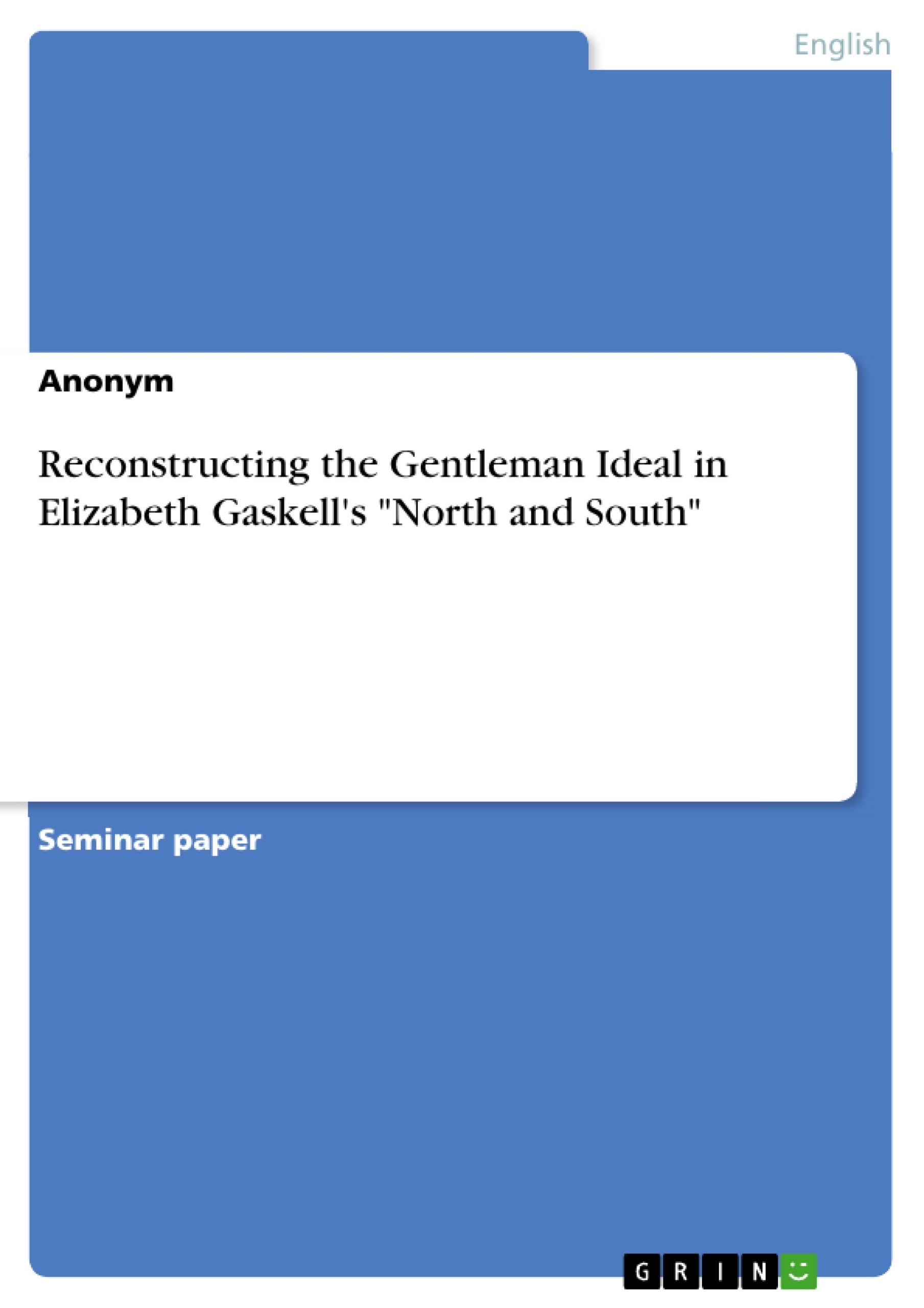This paper will look at the gentleman ideal from two perspectives: the ‘old’ ideal before the Victorian Age and the Victorian ideal of a gentleman. The following chapter will provide these ideals by reconstructing them with the help of texts that look at them from a retrospect and also, in case of the Victorian gentleman ideal, by looking at a frequently quoted contemporary work: Samuel Smiles’ "Self Help". Afterwards the findings will be used to analyse the gentleman ideal that is represented by three different male characters of Gaskell’s novel: the London lawyer Henry Lennox, the Milton factory owner John Thornton and the Milton factory worker Nicholas Higgins, in order to find out which ideal these three male characters display. So that at the end it becomes clear which ideal is represented in "North and South".
In Elizabeth Gaskell’s novel "North and South" the author presents the reader with the world of Victorian England during the industrialisation, a time at which change was a daily occurrence. With the rise of the middle-class society changed and therefore it is not surprising that even a well established social factor as the gentleman ideal changed during that period of time.
Inhaltsverzeichnis (Table of Contents)
- Introduction
- The Gentleman Ideal
- The Traditional Ideal before the 19th Century
- The Changed Ideal of the 19th Century
- Representation of the Gentleman Ideal in Gaskell's North and South
- The Ideal represented by Henry Lennox
- The Ideal represented by John Thornton
- The Ideal represented by Nicholas Higgins
- Conclusion
- Works cited
Zielsetzung und Themenschwerpunkte (Objectives and Key Themes)
This paper explores the transformation of the gentleman ideal in Victorian England, focusing on its representation in Elizabeth Gaskell's novel North and South. The paper aims to reconstruct the 'old' gentleman ideal before the Victorian Age and compare it with the changing ideal of the 19th century. This analysis will be applied to three male characters in the novel: Henry Lennox, John Thornton, and Nicholas Higgins.
- The evolution of the gentleman ideal in Victorian England
- The influence of social and economic changes on the gentleman ideal
- The representation of the gentleman ideal in literary works
- The relationship between social status and character in the Victorian era
- The changing role of men and women in society.
Zusammenfassung der Kapitel (Chapter Summaries)
The paper begins by outlining the traditional gentleman ideal before the Victorian era, characterized by its emphasis on aristocratic birth, education, and moral merit. It then examines the changing ideal of the 19th century, focusing on Samuel Smiles' Self Help and its emphasis on self-made character, integrity, and social conduct. This chapter also explores John Ruskin's ideas on the gentleman's character, highlighting the importance of compassion, truth, and seeking the bottom of any situation. The paper also discusses the shift towards a more democratic and equal relationship between men and women within the context of the Victorian gentleman ideal.
Schlüsselwörter (Keywords)
The paper focuses on key concepts such as the gentleman ideal, Victorian society, industrialization, social change, character, and gender roles. It also examines the works of Samuel Smiles, John Ruskin, and Elizabeth Gaskell.
- Quote paper
- Anonym (Author), 2017, Reconstructing the Gentleman Ideal in Elizabeth Gaskell's "North and South", Munich, GRIN Verlag, https://www.grin.com/document/920315



